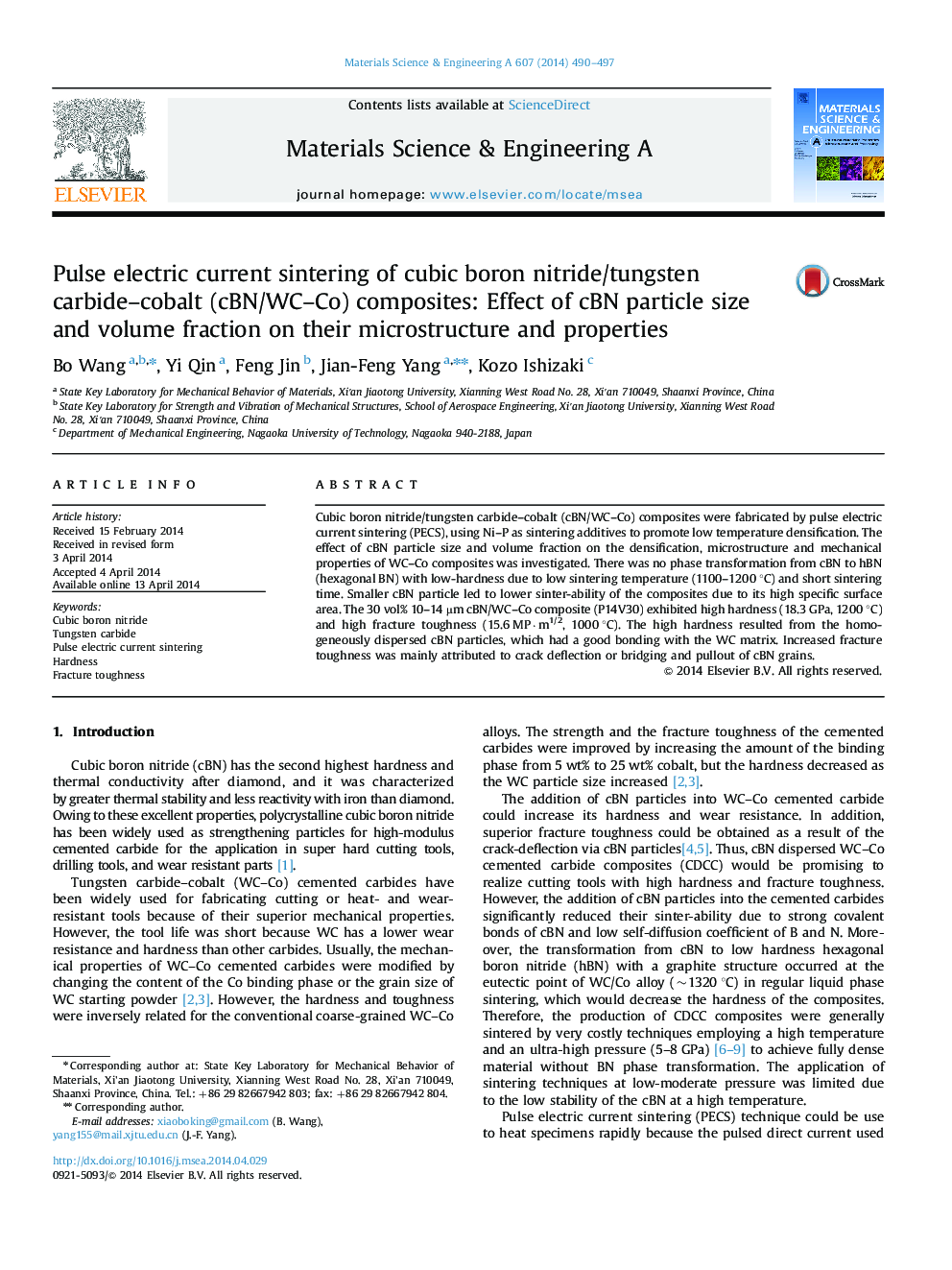| Article ID | Journal | Published Year | Pages | File Type |
|---|---|---|---|---|
| 1575000 | Materials Science and Engineering: A | 2014 | 8 Pages |
Abstract
Cubic boron nitride/tungsten carbide-cobalt (cBN/WC-Co) composites were fabricated by pulse electric current sintering (PECS), using Ni-P as sintering additives to promote low temperature densification. The effect of cBN particle size and volume fraction on the densification, microstructure and mechanical properties of WC-Co composites was investigated. There was no phase transformation from cBN to hBN (hexagonal BN) with low-hardness due to low sintering temperature (1100-1200 °C) and short sintering time. Smaller cBN particle led to lower sinter-ability of the composites due to its high specific surface area. The 30 vol% 10-14 µm cBN/WC-Co composite (P14V30) exhibited high hardness (18.3 GPa, 1200 °C) and high fracture toughness (15.6 MP·m1/2, 1000 °C). The high hardness resulted from the homogeneously dispersed cBN particles, which had a good bonding with the WC matrix. Increased fracture toughness was mainly attributed to crack deflection or bridging and pullout of cBN grains.
Keywords
Related Topics
Physical Sciences and Engineering
Materials Science
Materials Science (General)
Authors
Bo Wang, Yi Qin, Feng Jin, Jian-Feng Yang, Kozo Ishizaki,
